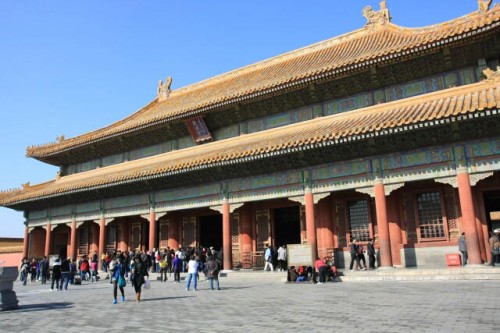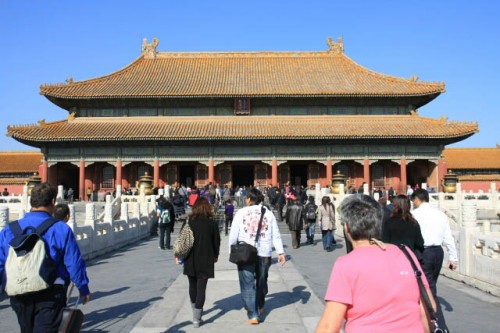Finally, I was inside the inner court of the Forbidden City. The outer court was so vast it took me almost an hour to get here, photo taking included. Once inside here, one would notice that the buildings are much closer together now. After all, this is where the emperors lived. The Palace of Heavenly Purity 乾清宫 is the first palace I would run into. Apparently, there are several palaces here with the emperors not content with the default one.
The Palace of Heavenly Purity was built in the Ming dynasty and rebuilt later in the Qing dynasty. Emperor Yongzheng was known for holding office and ceremonies here in this palace. This palace also served other purpores such as a holding imperial funerals with the coffin displayed to the public, as if to prove that there was no foul play in the death of the emperor. Emperor Yongzheng also started a system of succession where the emperor would choose his successor and keep the handwritten choice in a box hidden behind a big sign. If you look at it, it is not really very transparent, but this is also to uphold the power of the emperor and to prevent troublemakers from presenting their own successor.
[xmlgm {http://www.worldwanderings.net/kml/ForbiddenCity.kmz} zoom=19]

